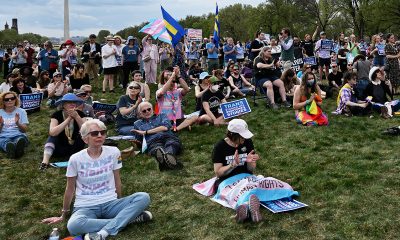Commentary
On this Transgender Day of Visibility, we can’t allow this administration to erase us
All people deserve to have our experiences included in the story of this country

By KELLAN BAKER | Since 2009, the world has observed Transgender Day of Visibility (TDOV) each March 31. The importance of ‘visibility’ feels especially significant this year, not only as a trans person but for me as a researcher whose career has been centered on equity and inclusion for transgender people. My work over the past 16 years, which has focused on advancing fairness, access, and transparency in health care for gender diverse populations, could not have prepared me for the speed and cruelty at which the Trump administration has worked to literally erase transgender people from public life.
From banning transgender people from serving openly in the military, blocking access to best practice medical care, and making it all but impossible for us to obtain accurate identification documents that match our gender, the impact of these attacks will be felt for years to come. As a scientist dedicated to fostering the health and wellbeing of diverse communities, I am particularly devastated by the intentional destruction of the federal research infrastructure and statistical systems that are intended to ensure the accurate and comprehensive collection of data on the full diversity of the U.S. population.
The importance of data cannot be understated. This makes the efforts by the federal government to remove survey questions, erase variables from key data sets, and stifle research even more alarming. By simultaneously removing access to existing datasets, removing gender (and other key measures, such as sexual orientation, race, and disability) from key surveys, terminating federal funding for research projects that include trans people, and censoring research projects at federal data centers, this administration’s goal is to erase the lived experiences of trans people – with the idea that if we don’t exist in data and in research, the federal government can claim that we don’t exist at all.
Just in the past two months, we’ve seen a rapid decimation of the inclusion of transgender people in federal research and their visibility in the federal statistical system.
Data sets that included gender measures have disappeared from federal websites. Critical data sets used by federal and state policymakers, public health staff, and researchers, such as the Youth Risk Behavior Surveillance System (YRBSS), were removed from the CDC website in response to a Trump executive order that made it the policy of the administration to recognize only two sexes, male and female. Although some datasets have been put back up, gender variables have been removed.
Surveys that had asked about gender identity no longer do. Claiming that the removal of gender identity measures from key national surveys such as the American Housing Survey, Household Pulse Survey, and National Health Interview Survey were “non-substantial,” the Trump administration has essentially skipped the extensive notice and public comment process that is required to make these types of changes—the same process that were used to add gender identity (and sexual orientation) measures.
In addition, attempts to exclude trans people and other communities facing disparities from surveys will result in a lack of large enough sample sizes to conduct quality data analysis, while reducing any chance of analyzing racial and ethnic differences among trans people.
Hundreds of grants supporting inclusive research have been terminated. The unprecedented move of the National Institutes of Health (NIH) to terminate research grants that include transgender people is just one example of this administration’s rush to eliminate funding from active scientific projects. In many cases, similar agencies are also now required to remove gender identity measures from federally supported surveys. Prominent trans health researchers have watched as their research portfolios are halted, work stopped, staff laid off, and participants left without care.
At the Institute for Health Research & Policy at Whitman-Walker, for example, we have already had seven studies terminated, with a financial impact that exceeds $3 million. One of these cancelled grants was a multi-year, longitudinal study in partnership with the George Washington University to explore the impact of structural racism and anti-LGBTQ bias on HIV risk among young queer and trans people of color nationwide. The notices of termination for this and other awards clearly spell out the administration’s disdain for groundbreaking research that seeks to understand and address health disparities related to LGBTQ populations, particularly trans people.
Censoring research. As seen with recent changes implemented by the CDC, the censorship of gender-related terms on federal websites and scientific publications is intended to further the erasure of evidence detailing the disparities faced by LGBTQ people.
On a day dedicated to honoring the lives and contributions of trans people, the impact that these egregious actions will ultimately have on the health and wellbeing of trans and nonbinary people is chilling. Without access to this knowledge, researchers will not be able to examine the repercussions of the harmful policies put forth by this administration and many states across the country, including bans and restrictions that negatively impact trans people’s physical and mental health, economic security, and educational outcomes.
Although there has been an effort by non-government entities to collect and store previously collected data prior to the Trump administration’s purges, state surveys, private research firms, and academics cannot fill the void left by the federal government’s decision to halt data inclusion. Ensuring that public entities and researchers can continue to use these datasets is only one piece of the puzzle being taken on by groups such as the Data Rescue Project and repositories like Data Lumos. Work also continues thanks to the efforts of the U.S. Trans Survey, the California Health Interview Survey (CHIS), and the important research and analysis of both Gallup and The Pew Research Center. Yet, gaps still exist due to threats of federal funding cuts to organizations committed to safeguarding inclusive data assets in the wake of the administration’s continued assault on trans rights.
This administration suggests that removing one of the only tools available for identifying an entire population of people is a “non-substantial” action. This not only questions the intelligence of the American people but is a direct insult to trans folks everywhere. All people deserve to be counted and to have our experiences included in the story of this country. Transgender people have always been a part of this country, and even if our nation’s surveys choose to exclude us, we continue to exist—authentically, unapologetically, and forever visible.
Kellan Baker, Ph.D., M.P.H, M.A., is executive director of the Institute for Health Research & Policy at Whitman-Walker.
Commentary
Children of American service members defend Pentagon DEI policies
Students protested Defense Secretary Pete Hegseth during Germany visit

“And a little child shall lead them.” (Isaiah 11:6)
Since the new U.S. Defense Secretary Pete Hegseth began his assault on diversity, equality, and inclusion in the U.S. armed forces, hundreds of students at U.S. military schools in Europe and Japan — the children of American servicemembers stationed overseas — have staged walkouts and other demonstrations to protest the new policies.
When Hegseth visited Stuttgart, Germany — the headquarters of U.S. European Command and U.S. Africa Command — on Feb. 11, more than 50 students from the Alexander Patch Middle School held the first of these protests when they left their classes and gathered in the school’s courtyard for an hour-long protest meeting.
More than a hundred students at the Nile Kinnick High School in Yokosuka, the children of Navy parents and Defense Department employees based at Yokosuka, Japan, the headquarters of the U.S. 7th Fleet, walked out of classes and held a protest in the school’s courtyard on Feb. 21, chanting and carrying banners.
“I love this school; I think one of its strengths is its diversity,” said Kinnick High School senior Chase Hassell, president of the student council and leader of the walkout. “I think we have such a great multicultural community, and I think that it’s important for the development of all children — not just us — to have experience with different people of different beliefs and backgrounds,” Hassell told Stars and Stripes after the demonstration.
And on March 6, hundreds of students participated in demonstrations at Humphrey High School at Camp Humphreys, South Korea, and at Ramstein High School and Kaiserslautern High School in Ramstein, Germany, and Wiesbaden High Schools in Wiesbaden, Germany, carrying signs that proclaimed “Solidary in Diversity,” “Censorship is Un-American,” “Our Classrooms Are Not Your Ideological Battleground,” “This Affects People of Color, LGBTQ+, Woman, and Everyone,” and “More Books, Less Bigots!”
There’s a great deal of anger around the country about what the Trump administration is saying and doing. But anger is not enough. These students are not just angry, they’re actually doing something to fight back. Maybe we all have something to learn from them.
Daniel Volman is the director of the African Security Research Project in Washington, D.C., and a specialist on U.S. national security policy toward Africa and African security issues.
Commentary
Survivors of sex crimes are unsung heroes
Taking trauma and turning it to their advantage
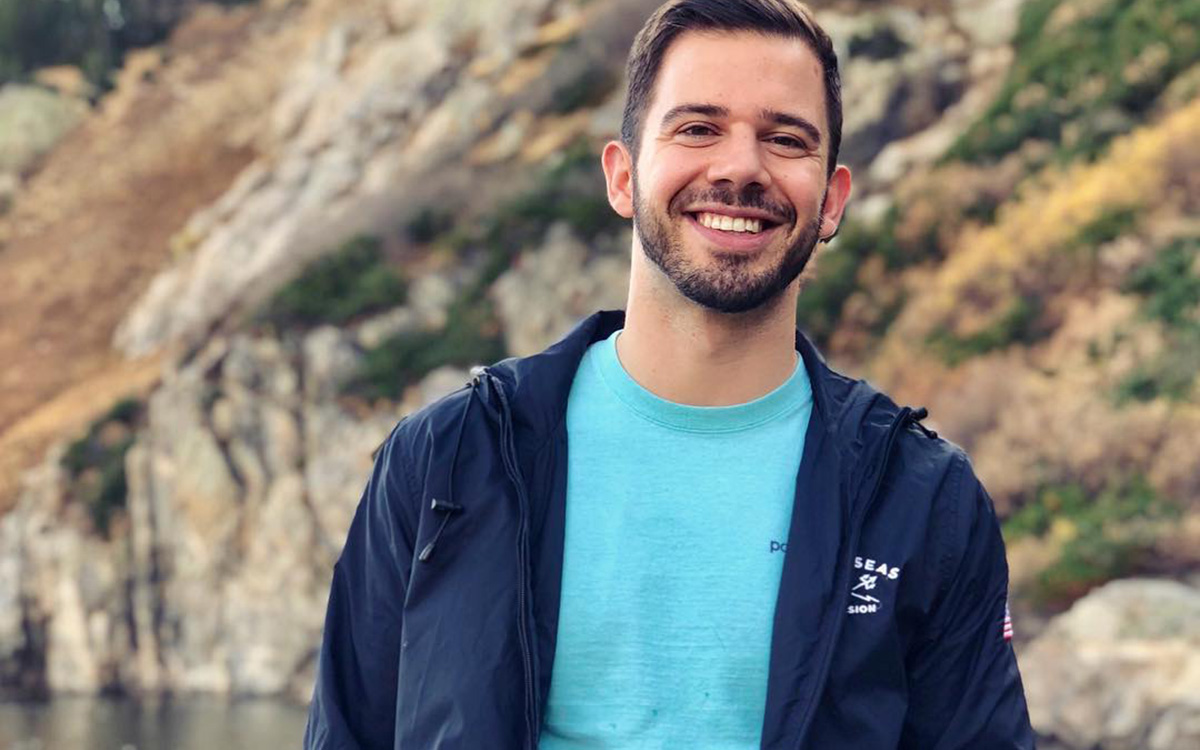
(Editor’s note: This is the second of a two-part story. Click here to read the first installment.)
Last month, I started watching “The X-files.”
For the most part I loved the show, with Agents Scully and Mulder as the primary reasons why. Yet what I found most frustrating was watching their investigations. As early as episode one, set in a small town of scared people guarded by scary men, Agent Scully proposed coincidences while Agent Mulder proposed aliens. Despite the episode having “cult” written all over it, both agents seemed none the wiser.
Recently, I learned the FBI has an open process for writers and other creatives to learn how the agency works. I also discovered the FBI has a history of monitoring writers. In fact, the FBI is about as image-conscious as your typical D.C. gay, making me wonder how the “X-Files” moved forward with little pushback. That’s about as interesting as UFOs being discovered in New Mexico as we tested the atomic bomb.
But if you’re reading this, you likely want me to shut up about the “X-Files” and get back to my story. When I left off, my friend had disappeared and my work cleared me of any wrongdoing. That said, I was mysteriously fired in September 2022—nearly a year after the initial incident—and just six weeks after my boss learned that I wrote books.
The process of my firing was strange, to say the least. First and foremost, I was never given a reason. To this day it remains a mystery. My now-former employer—a high-profile lobbying firm—then bullied me into signing an NDA to access my severance.
By the way, I negotiated up. While I don’t know what I did, I had a feeling I had that power. I was right.
Just prior to the firing, they asked me to bring in my laptop so they could download my files. This rang an alarm for me, primarily because they never gave me a laptop. So, they wanted me to bring in my personal laptop. As a writer with original materials, I reasonably asked what constituted a work file. I never received an answer.
Coincidentally, I met my ex-boyfriend exactly one week before I got fired. He is the same ex-boyfriend from my religion piece, in which I mentioned he fell into hard times. Specifically, I was referring to concerning signs I spotted last April, primarily on the gay apps, and with memories of the last boy still fresh on my mind, I refused to let another slip from my grasp.
So, what did I do? I dove headfirst into hell in a messy attempt to rescue him. After playing this new game of cat-and-mouse in which I was said mouse, allow me to share what I learned: Over the course of several months, I spotted sketchy characters at my ex’s place—characters I suspected dealt hard drugs, which was highly out of character for him. Moreover, I found online accounts promoting extremely suspect pornography and, yes, pimping services on X (formerly Twitter), some of which looked a lot like my ex. While I didn’t know what exactly was happening, I knew something was off, but when I confronted my ex, he denied it.
Being the stubborn asshole that I am, I decided to check these sketchy characters out for myself. It turns out I was spot on about their sketchiness. I learned they not only drug unsuspecting young men in a coordinated manner, but once drugged they sexually violate them and—if drugged enough—begin recording videos. It’s all made to look random yet safe; for example, there always seems to be a nurse in the group who is “experienced” in administering needles.
Once I had proof these people were unsafe, I took further action for my ex. In mid-November, I reached out to someone in his personal life, which was a tough decision since he was closeted. I was strategic and chose someone who knew he was bisexual, and after connecting with her on Instagram, spoke on the phone with her the next morning. Upon hearing my concerns, she agreed based on her own observations.
Apparently, she spotted signs of him being physically harmed over the summer. She and I spoke for hours on end about the situation and how we could help him. Then, just a week later, I lost contact with her and my ex. I haven’t heard from either since.
I eventually grew concerned enough to contact the police and the FBI. In the meantime, particularly following my trauma article, sex workers approached me to share their stories—primarily stories of rape and abuse alongside a power structure rooted in it. As for those who try to oppose this system? They’re often written off as mentally ill.
I don’t know about you, but I refuse to live in a world where young queers are shepherded into this system. That’s the opposite of what I envision for the queer community.
Mid-Atlantic Leather weekend arrived in January, along with more sex workers. Once again, some approached me to share their stories—about their aspirations, about their art, about their perspectives on the world. And once again, about the system of abuse designed against them from the start. I heard stories of young boys raped by their fathers, or friends of their fathers, or about the drugs used to coerce them into sexual activity. Sadly, just like a UFO witness, they are usually written off and never taken seriously, especially if they have a record of drug abuse or mental illness. Seems to be a pattern, doesn’t it?
That said, these men are not solely victims. If anything, they took their trauma and turned it to their advantage. I’d like to take this moment to thank them. They’re unsung heroes—each and every one—in a nation that often shames them.
Yet as proud as I am of these sex workers, my heart was equally broken. These stories were painful to hear, to say the least. I quickly grew paranoid of people around me, even friends at times. There were other times I sat alone in my apartment, bawling over the men I had lost, along with the pain others had experienced. This only strengthened my resolve to end it.
To top this all off, my final discovery came just two months ago. Turns out there’s an X account publicly teasing me about this entire affair. The account even references this column and, according to the receipts, started well before I noticed concerning signs about my ex in the first place.
Hello there, dear X account. It appears you’ve been observing me. Consider this my proverbial tapping back on the glass.
Wow—there seems to be a lot of time, energy, and effort spent on little ole me. Why is that, I wonder? I’ve mentioned before I’m just a measly little barback who has been fired twice. Although looking back, those firings were strange too, weren’t they?
Is it the abuse I uncovered? Is it the details of my lover’s past? Is it something I wrote? Is it a combination of the three? And is it possible that the little dark cloud that’s been following me in D.C. is more intentional than I once thought?
I may never learn the truth on my own, but I can pose another question: what’s the only thing scarier than UFOs? To me there’s just one answer: that UFOs were never real in the first place. Occasionally, answers to unsettling mysteries simply unearth more unsettling mysteries.
I mentioned before in this column that I arrived to D.C. naïve about the world, perhaps just as naïve as Agents Scully and Mulder. Yet in my naiveté I tripped on something: the rot hiding beneath the surface of our nation’s capital. No, it isn’t coincidence. It isn’t aliens, either. But whatever it is, I alone cannot identify it.
Throughout my time uncovering this story, I’ve come across friends, acquaintances, and even relatives who suffered abuse, along with threats or shaming to keep them quiet. They come from all races, creeds, backgrounds, and orientations, and as it turns out, some of the infrastructure of power in D.C. and in towns across this nation are built around it. While I’m ready to tear it down, this isn’t just my story. I might be the one starting it, but it’s not on me to finish.
The most I can do is hand the pen over to the victims. I’ve shared my part. Now it’s their turn. As for the audience: I hope you’re now ready to start believing.
Jake Stewart is a D.C.-based writer and barback.
Commentary
The evolution of visibility: D.C. Pride 1990-1997
Efforts to include trans, bi identities intensify

In conjunction with WorldPride 2025, the Rainbow History Project is creating an exhibit on the evolution of Pride: “Pickets, Protests, and Parades: The History of Gay Pride in Washington.” It will be on Freedom Plaza from May 17 through July 7. This is the seventh in a series of 10 articles that will share the research themes and invite public participation. In “The Evolution of Visibility” we discuss how by the 1990s victories from Gay Pride grew into more groups calling for more types of events to celebrate more identities under the rainbow.
In 1988, due to a lack of inclusiveness and financial problems, the P Street Festival Committee dissolved itself and Gay and Lesbian Pride of Washington took up the mantle of organizing Pride. Gay women solidified their distinct identity as lesbians and oftentimes “lesbian” began to appear in front of the word gay at events. However, the conservative politics of Reagan’s 1980s and the AIDS pandemic had presented a public perception of the homosexual community as largely white and male despite the way AIDS ravaged Black and Brown communities and the role of lesbian leadership in responding to the crisis.

According to her Rainbow History Project oral history, Carlene Cheatam was aware that “most of the people in the Black gay and lesbian community [were] in the closet” and knowing that a Pride organized by the P Street Festival without her would be overwhelmingly white, she sought to make space for African Americans in the gay community. Several efforts grew out of The Clubhouse, a popular Black-owned after-hours dance club in regards to the need for funds to support care of Black people suffering from AIDS. Those efforts led to the first Black Lesbian and Gay Pride Day on Memorial Day Weekend, 1991. Under Cheatam, and co-founders Welmore Cook, Theodore Kirkland, and Ernest Hopkins, Black Pride made space for African American gays and lesbians, and raised money to help AIDS service organizations.
Despite the turnout of nearly 1,000 people, and that D.C. was a majority Black city, “initial criticisms surfaced [in 1991] that we were being separatists,” one of the organizers told Gay Community News. The 1990s were characterized by an increasing diversity within the gay community, there was an ever growing number of people with a multiplicity of sexual and racial identities, all of whom wanted visibility and celebration.
ENLACE, the first Latino/a gay and lesbian association was created to make space for and represent the Latin American and Caribbean gay community. In addition to sponsoring social events and the only Spanish-language hotline for gays and lesbians, ENLACE also educated the gay community about AIDS and worked within the Latino communities on issues of homophobia. ENLACE marched not only in the gay Pride parades, but also in the Latino community events. Support for ENLACE grew after the murder of Ana Maria Rosales, who was shot and killed on Jan. 7, 1993, in what many believed was a crime driven by racism and homophobia.
The Lesbian Avengers organized the world’s first Dyke March on the eve of the April 1993 March on Washington for Lesbian, Gay and Bi Equal Rights and Liberation. About 20,000 women marched against anti-gay bills, and for grassroots organizing, and awareness of women’s issues.

Transgender and bisexual people also lobbied to be included in Pride, more than just in name only. Transgender support groups and activist organizations were created in tandem during the 1990s. The Bisexual Centrist Alliance and Jeffrey Pendleton, a gay and transgender man, joined forces to create a separate Pride Festival to protest bi and trans exclusion from the Pride title and literature. The Transsexual Menaces demonstrated at Judiciary Square during the Stonewall 25 anniversary. Robin Margolis and other bi and trans coalition activists, assisted by members of various gay and lesbian organizations, held a Diversity Pride picnic in Rock Creek Park on June 10, 1996.
Rainbow History Project’s exhibit centers the voices of the event organizers, includes dissenting opinions on Pride, and highlights the intersections with other movements for equal rights and liberation. We need your help to tell our story! If you have any images and input contact us and get involved!
Vincent Slatt is the senior curator for the Rainbow History Project.
-
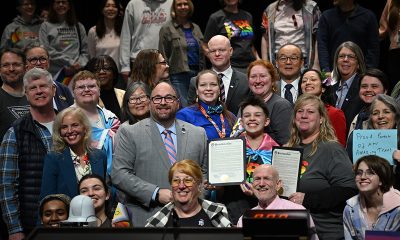
 Virginia4 days ago
Virginia4 days agoFairfax County School Board issues Trans Day of Visibility proclamation
-
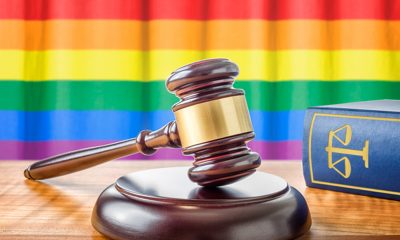
 Trinidad and Tobago5 days ago
Trinidad and Tobago5 days agoTrinidad and Tobago recriminalizes homosexuality
-
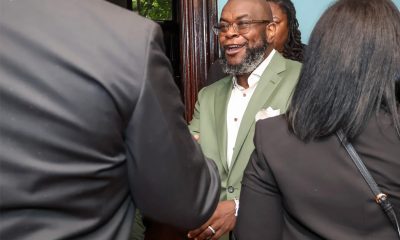
 National2 days ago
National2 days agoDestination Tomorrow works to empower LGBTQ community
-
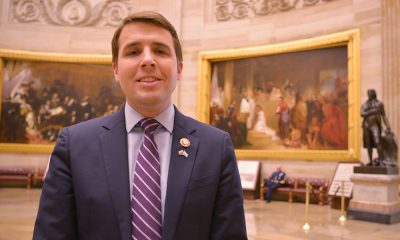
 Congress4 days ago
Congress4 days agoChris Pappas reportedly planning run for US Senate

